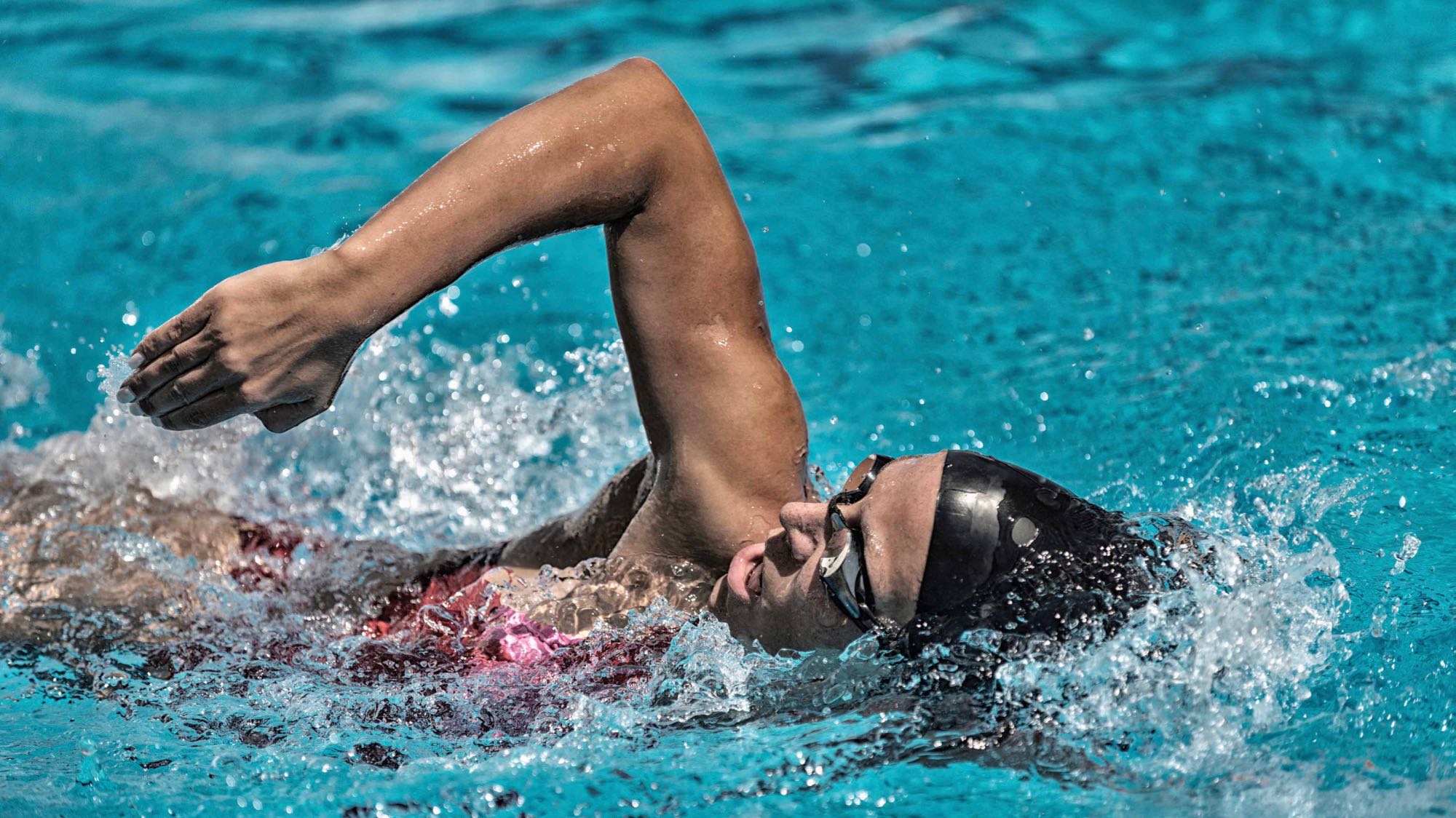How Fast Can I Get In The Swim?

Ever wondered how far your swimming athletic potential could take you? Well, it depends. Here’s the approach to take based on your swimming history and future racing goals.
New swimmers
Triathletes who come to the sport with no swimming experience face a challenge when tackling a new sport focused on technique over strength or aerobic capacity. And because swimming takes up the least amount of time in a triathlon (see below), how is time best spent for newer swimmers?
“Adult-onset swimmers” will benefit the most from spending time in the water to become efficient. By committing seven or more hours per week to training in the water, these athletes could drop significant time (upward of 15 minutes) from their long-course swim splits and conserve energy for the remaining 88–90 percent of the event. Technique should be the primary focus to develop an efficient stroke, and speed will steadily improve and swim splits will get faster over time if you build good form and muscle memory from day one.
Experienced swimmers
An established triathlete who can already complete the swim leg in the mid-pack with minimal energy expenditure has an entirely different outlook. By training seven or more hours per week, these athletes might drop 1–3 minutes off their swim times. The training time commitment is not worth the end result. If the same training time was devoted to the bike or run, a 15–30-minute improvement could be had. Training 3–5 hours per week in the water is typically enough to maintain their current ability over 1.2 or 2.4 miles.
Other reasons to swim more
There are other times when swim training can be beneficial to overall triathlon training. First, it is a low-impact and highly aerobic sport, so total yardage can be increased during recovery cycles to allow the body to recover without losing endurance. Many athletes increase their pool time during the winter months when the cold and early nights make other training impossible. Finally, Masters swimming and similar groups provide a camaraderie and accountability that is often lost during long solo training sessions.
In the end, triathlon requires proficiency in three sports to be successful. The race can’t be won in the swim, but it can be lost. If swimming is your weakness, don’t be afraid to spend a little extra time in the pool to drop a significant amount of time at the races. If you are satisfied with your swim, stick to the minimum amount of training and focus on improving the other two legs. Talk with your coach or experiment with your own training to find a balance that works for you.
Do this for swim-faster success
- Swim at least three times per week to maintain a feel for the water.
- Complete a main set of 1500–2500 per practice.
- Plan swim practice when other training isn’t possible (i.e., too dark, too cold, too little time, etc.).
- Meet up with others at the pool to hold yourself accountable.
- Turn it into a brick—bike or run afterward with less time needed to warm up.
- Get in the open water as often as possible to mimic race conditions.